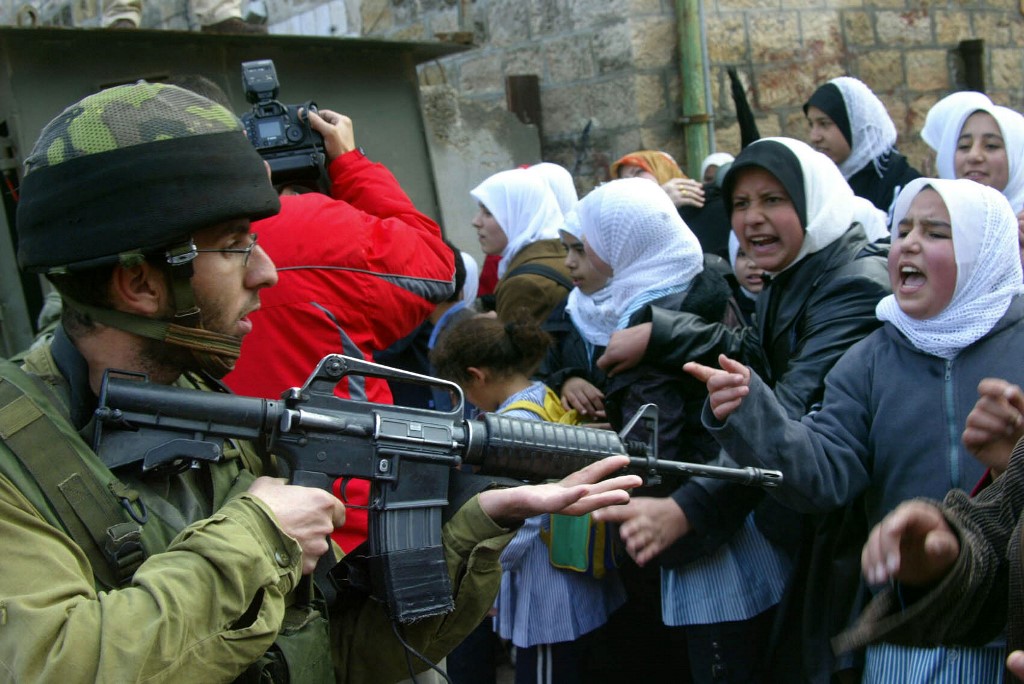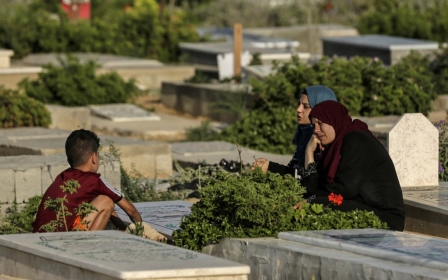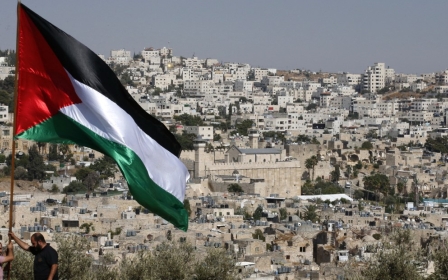The false unity of remembering Israeli and Palestinian deaths

Late last month, a joint Israeli-Palestinian Memorial Day ceremony was held, characterised as an alternative to Israel’s official national memorial commemorations.
Buma Inbar, whose son, an Israeli soldier, was killed in Lebanon in 1995, initiated the ceremony in 2005. Since then, it has been jointly organised by Combatants for Peace, an organisation of Israeli and Palestinian ex-combatants, and the Parents Circle Families Forum, which brings together Israeli and Palestinian bereaved families.
The call by Israeli and Palestinian bereaved families for a future free of war and violence resonates widely. While the first ceremony saw only a few dozen attendees, that number has since grown to thousands.
This year, due to the coronavirus pandemic, the ceremony was held online, allowing organisers to reach a much larger audience, with around 200,000 viewers worldwide.
False narrative
Yet, the collaborative branding of the ceremony is a false narrative. This ceremony is an Israeli initiative. It is held in Tel Aviv alongside Israel’s official Memorial Day events, and participants are predominantly Israeli.
The handful of Palestinians who come from the occupied West Bank are required to obtain entry permits from the Israeli government, which are usually obtained only after court challenges. For example, in 2019, there were 10,000 participants in the ceremony held in Tel Aviv, with only 100 Palestinians from the West Bank granted permits to attend.
This year’s ceremony was sponsored by Israeli and Jewish peace groups such as Peace Now, J Street, The Union for Reform Judaism, the New Israel Fund and interfaith groups, among others. The list of supportive liberal Zionist organisations is telling of the politics that underpin it.
The colonial violence that breeds death and bereavement is set aside, in favour of what is seen as a powerful presentation of a humanist vision
The ceremony builds on a symmetry between Israeli and Palestinian deaths, the occupiers and their victims. In this year’s ceremony, for example, Israeli speakers included the brother of an Israeli soldier killed during the Israeli invasion of Jenin in 2002, in which tens of Palestinians were killed. On the Palestinian side, speakers included the mother of a 14-year-old boy shot dead by an Israeli soldier.
At the heart of the ceremony is the idea that we, Palestinians and Israelis, are all victims of a conflict between two national movements. Israeli and Palestinian bereaved families are invited to share their stories of grief as a message of hope. This experience, we are told, is shared; we both mourn our loved ones and live the pain of their loss.
As Israeli activist Leah Shakdiel said in her speech: “We share our pain of bereavement with the other side, listen to their pain of bereavement, so that we can also share the joy of life and growth and peace, of equal human beings and equal citizens, of two peoples in one land, proud of their separate national heritage, and determined to realise their dreams together.”
Murderous colonial regime
The colonial violence that breeds death and bereavement is set aside, in favour of what is seen as a powerful presentation of a humanist vision. It is undeniable that we all mourn our dead. Even those who occupy, colonise or commit war crimes have a family and loved ones to mourn them.
But is the death of an Israeli soldier and its Palestinian victim the same, simply because they are both mourned by their families? And what does it mean, politically, to ask Palestinians to mourn Israeli soldiers?
The ceremony may provide catharsis for the guilty liberal conscience, but it does little for the oppressed. Bereavement and suffering do not happen in a vacuum; they are political.
To equate the deaths of those who occupy, colonise and oppress with the deaths of those who are occupied, colonised and oppressed is in itself a form of violence. The death and loss commemorated in this ceremony are not the tragic result of a fatal accident or illness; they are the product of murderous colonial violence.
While some Palestinian bereaved families participate in the ceremony in a quest to give meaning and visibility to their loss and suffering, the joint ceremony is driven by an Israeli agenda, and it is designed to meet Israeli needs.
It provides an answer to the Israelis who are not willing to abandon Israeli national politics, nor to reject the very idea of a national Memorial Day for a settler state that continues to occupy, dispossess, expel and kill Palestinians on a daily basis.
Decades of loss
Participants do not necessarily abandon their commitment to settler nationalism. Many of the Israeli participants who attend the joint ceremony celebrate Israel’s independence the next day.
The ceremony allows Israeli leftists to have their cake and eat it too. By framing it in an inclusionary and reconciliatory discourse, they can remain part of the Israeli settler national ethos in their own way, even if their way is rejected by the Israeli majority. In the process, they appropriate Palestinian loss and pain and frame it as part of Israeli national politics.
Our victims, however, are not part of the Israeli story of memorial; they are part of a Palestinian story of decades of loss, oppression and resistance that continues to this day.
The views expressed in this article belong to the author and do not necessarily reflect the editorial policy of Middle East Eye.
Middle East Eye propose une couverture et une analyse indépendantes et incomparables du Moyen-Orient, de l’Afrique du Nord et d’autres régions du monde. Pour en savoir plus sur la reprise de ce contenu et les frais qui s’appliquent, veuillez remplir ce formulaire [en anglais]. Pour en savoir plus sur MEE, cliquez ici [en anglais].







